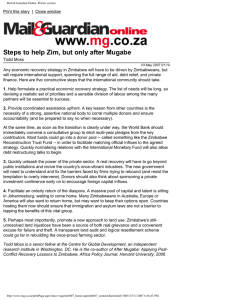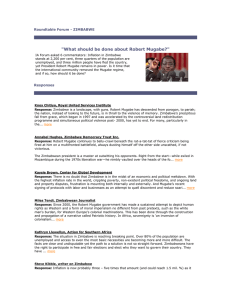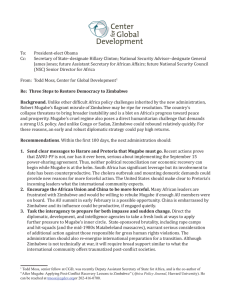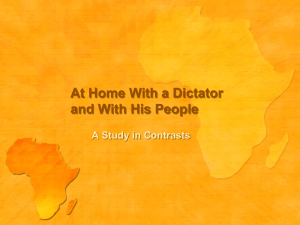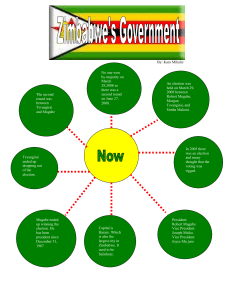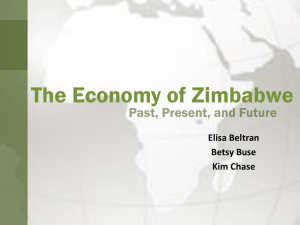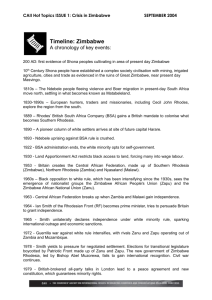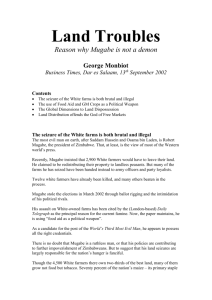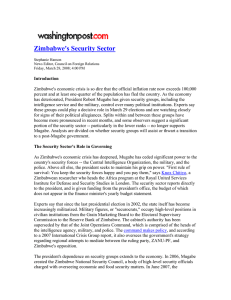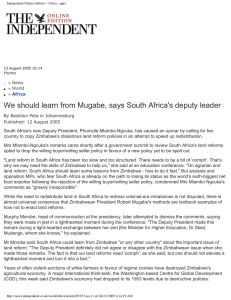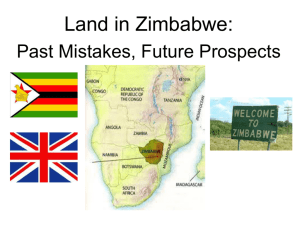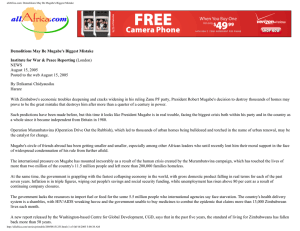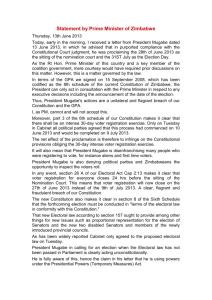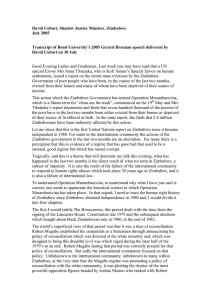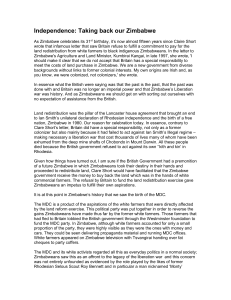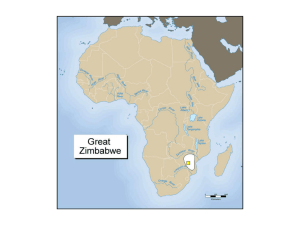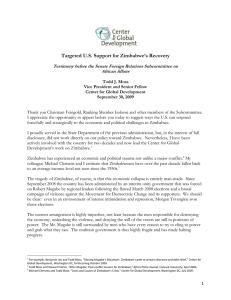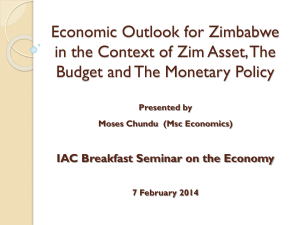Zimbabwe - Development Gap
advertisement
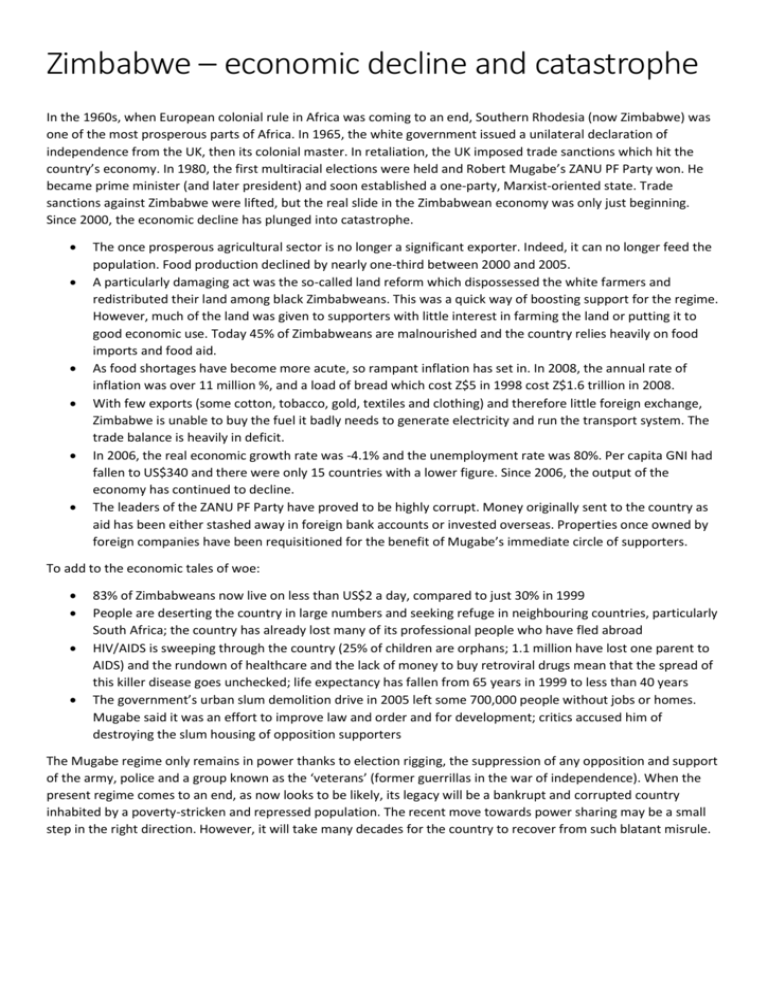
Zimbabwe – economic decline and catastrophe In the 1960s, when European colonial rule in Africa was coming to an end, Southern Rhodesia (now Zimbabwe) was one of the most prosperous parts of Africa. In 1965, the white government issued a unilateral declaration of independence from the UK, then its colonial master. In retaliation, the UK imposed trade sanctions which hit the country’s economy. In 1980, the first multiracial elections were held and Robert Mugabe’s ZANU PF Party won. He became prime minister (and later president) and soon established a one-party, Marxist-oriented state. Trade sanctions against Zimbabwe were lifted, but the real slide in the Zimbabwean economy was only just beginning. Since 2000, the economic decline has plunged into catastrophe. The once prosperous agricultural sector is no longer a significant exporter. Indeed, it can no longer feed the population. Food production declined by nearly one-third between 2000 and 2005. A particularly damaging act was the so-called land reform which dispossessed the white farmers and redistributed their land among black Zimbabweans. This was a quick way of boosting support for the regime. However, much of the land was given to supporters with little interest in farming the land or putting it to good economic use. Today 45% of Zimbabweans are malnourished and the country relies heavily on food imports and food aid. As food shortages have become more acute, so rampant inflation has set in. In 2008, the annual rate of inflation was over 11 million %, and a load of bread which cost Z$5 in 1998 cost Z$1.6 trillion in 2008. With few exports (some cotton, tobacco, gold, textiles and clothing) and therefore little foreign exchange, Zimbabwe is unable to buy the fuel it badly needs to generate electricity and run the transport system. The trade balance is heavily in deficit. In 2006, the real economic growth rate was -4.1% and the unemployment rate was 80%. Per capita GNI had fallen to US$340 and there were only 15 countries with a lower figure. Since 2006, the output of the economy has continued to decline. The leaders of the ZANU PF Party have proved to be highly corrupt. Money originally sent to the country as aid has been either stashed away in foreign bank accounts or invested overseas. Properties once owned by foreign companies have been requisitioned for the benefit of Mugabe’s immediate circle of supporters. To add to the economic tales of woe: 83% of Zimbabweans now live on less than US$2 a day, compared to just 30% in 1999 People are deserting the country in large numbers and seeking refuge in neighbouring countries, particularly South Africa; the country has already lost many of its professional people who have fled abroad HIV/AIDS is sweeping through the country (25% of children are orphans; 1.1 million have lost one parent to AIDS) and the rundown of healthcare and the lack of money to buy retroviral drugs mean that the spread of this killer disease goes unchecked; life expectancy has fallen from 65 years in 1999 to less than 40 years The government’s urban slum demolition drive in 2005 left some 700,000 people without jobs or homes. Mugabe said it was an effort to improve law and order and for development; critics accused him of destroying the slum housing of opposition supporters The Mugabe regime only remains in power thanks to election rigging, the suppression of any opposition and support of the army, police and a group known as the ‘veterans’ (former guerrillas in the war of independence). When the present regime comes to an end, as now looks to be likely, its legacy will be a bankrupt and corrupted country inhabited by a poverty-stricken and repressed population. The recent move towards power sharing may be a small step in the right direction. However, it will take many decades for the country to recover from such blatant misrule.
